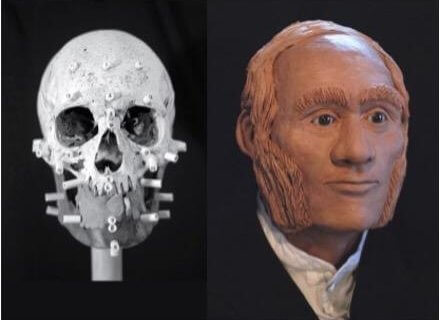WATERLOO, Ontario — Famously depicted in a best selling novel and original TV series, the doomed Franklin expedition of 1845 saw not a single survivor return from its ill-fated plan to explore the northwest passage. Now, for the first time ever, DNA and genealogical analyses have successfully identified the skeletal remains of a crew member.
Using tooth and bone samples recovered in 2013 on King William Island, Nunavut, scientists can now confirm the remains belong to Warrant Officer John Gregory. Researchers say Gregory was an engineer aboard HMS Erebus, one of two ships in the Franklin expedition, the other being the Terror. A DNA sample from one of Gregory’s modern day descendants helped confirm the work.
“We now know that John Gregory was one of three expedition personnel who died at this particular site, located at Erebus Bay on the southwest shore of King William Island,” says co-author Douglas Stenton, adjunct professor of anthropology at the University of Waterloo, in a release.
“Having John Gregory’s remains being the first to be identified via genetic analysis is an incredible day for our family, as well as all those interested in the ill-fated Franklin expedition,” adds Gregory’s great-great-great grandson Jonathan Gregory of Port Elizabeth, South Africa. “The whole Gregory family is extremely grateful to the entire research team for their dedication and hard work, which is so critical in unlocking pieces of history that have been frozen in time for so long.”
Uncovering the fate of Gregory and the crew
Scientists have also discovered the remains of 26 other members of the Franklin expedition at nine archaeological sites. All of those samples are undergoing DNA testing as well.
“Analysis of these remains has also yielded other important information on these individuals, including their estimated age at death, stature, and health,” says study co-author Anne Keenleyside, an anthropology professor at Trent University.
“We are extremely grateful to the Gregory family for sharing their family history with us and for providing DNA samples in support of our research. We’d like to encourage other descendants of members of the Franklin expedition to contact our team to see if their DNA can be used to identify the other 26 individuals,” Stenton notes.
Luckily, genealogical records also showed a direct, five-generation paternal relationship between a living descendant and John Gregory.
“It was fortunate that the samples collected contained well-preserved genetic material,” says study co-author Stephen Fratpietro of Lakehead University’s Paleo-DNA lab.
The DNA evidence also reveals Gregory survived for three years on board HMS Erebus while the ship was trapped in ice. He ultimately passed away 75 kilometers south at Erebus Bay.
The study appears in the journal Polar Record.
